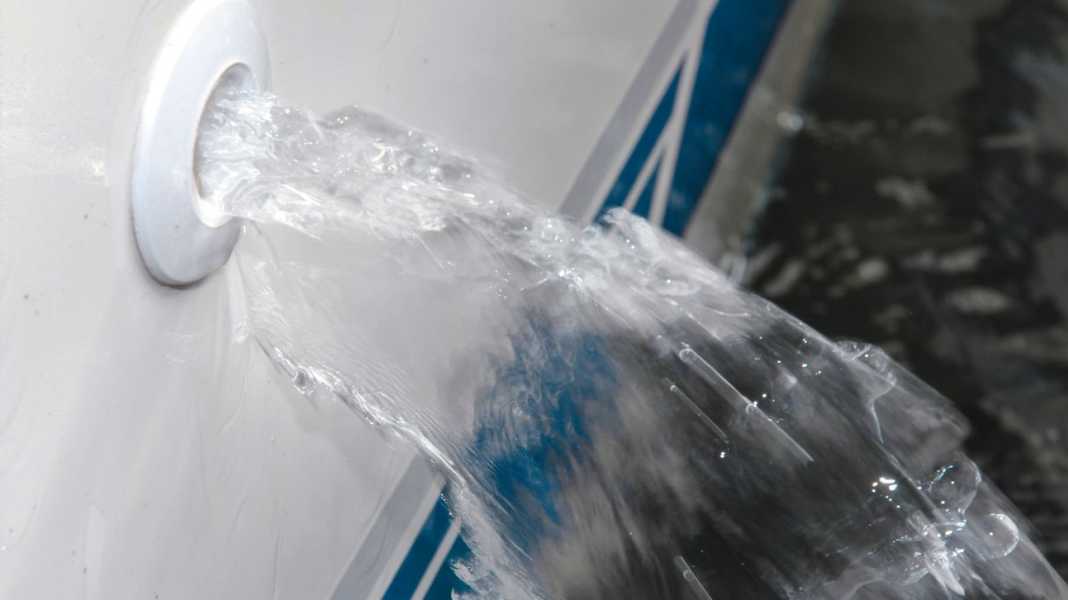
Apart from people overboard - and fire on board - the third nightmare of every skipper and his crew is rising water in the ship - flowing in uncontrollably through a leak that can hardly be localised immediately, let alone plugged immediately.
Without effective mechanical assistance, the only option is a quick hand-to-hand bailer, if one is available on board.
In Boote 8/2019, we looked at smaller submersible pumps with flow rates of up to 40 litres per minute
(l/min) and realised that they are not suitable as a saviour in an emergency due to their sometimes alarmingly low performance.
This test therefore focuses on so-called high-performance pumps, also known as "heavy duty", which are designed to keep water ingress at bay and save time when searching for leaks.






Based on the recommendations of Germanischer Lloyd (GL), bilge pumps should be able to pump around 100 l/min out of the boat if the worst comes to the worst. But do bilge pumps for recreational boating actually achieve this performance?
To get to the bottom of this question, we hadeight high-performance pumpsall of which, according to the manufacturer, have flow rates in excess of the required 100 l/min, compete against each other. We wanted to find out whether they deliver what the manufacturers promise.
All manufacturers specify the flow rate with an open outlet without a hose connection. This irritated us, and possibly also the user, because this information is ultimately irrelevant in practice, as the pump will always be installed at the lowest point of the bilge and the outlet is at least one metre above it in order to be above the waterline. In practice, there is simply no such thing as an "open outlet" on board.
Only four pumps are specified by the manufacturers for a delivery head of one metre. Information on a delivery head of two metres is missing for all pumps.
For the four remaining pumps, a maximum delivery head is stated without specifying how much water is then transported outboard - in our eyes just as useless. We tested the performance of eight pumps from six manufacturers at a delivery head of one and two metres. Another important test criterion is the maximum power consumption when switching on.
For theDelivery head test we built a hose wall with two height levels. The hose diameters we used were based on the connection pieces, i.e. a maximum of 38 mm. We determined the current consumption using a current clamp. We used a 90 Ah 12-volt battery as the power source, which was permanently connected to a power source and was permanently supplied with 13.2 volts.
At a delivery head of one metre, the Johnson L 4000 pump delivered the best results at around 115 l/min and the Whale Orca 2000 at 110 l/min. We measured the worst value with the Marco UP 2000 at 73 litres per minute.
The manufacturer was just as economical with the product description as it was with the performance of the pump.
was.
The performance of all other products was somewhere in between and therefore formed the midfield. With
96 l/min and just under 90 l/min, the pumps from Albin, Attwood and Rule (2000 Gold) came closest to meeting the requirements.
With a delivery head of two metres, the large Johnson L 4000 was again in first place and achieved
the GL recommended output of 100 litres per minute. It was followed by the Albin Heavy Duty 2250 with around
79 litres and the Whale Orca 2000 with 78 litres per minute.
With thePower consumption we measured the maximum required current flow at the switch-on moment. This is significantly higher than the operating current and therefore plays a major role in the power supply. Here too, as with the flow rates, we found considerable differences, with the current in continuous operation being one to two amps lower for all pumps.
However, themost powerful Johnsonwith seven amps above the current consumption specified by the manufacturer,worst . Only three pumps were correct or even lower than stated in the data sheet. The Whale Orca 2000 cut a very good figure here, with 0.8 amps below the specified current consumption.
The high currents of up to 20 A in the powerful pumps mean that they can discharge the on-board batteries to such an extent within one to two hours that the pumping capacity decreases and the batteries have to be recharged via the alternator. However, this is not always guaranteed in an emergency and is even impossible in the event of an engine failure.
Conclusion
If we summarise the individual results, then theJohnson L 4000 clearly at the top in terms of conveying capacityIt fulfils all requirements. However, it is also at the top in terms of price and power consumption. Just under 240 euros and 22 amps of starting current speak for themselves.
The conveying capacity of theWhale Orca 2000. It also achieves significantly more than 100 l/min at a delivery head of one metre, but only requires 9.2 A in the starting torque and costs around 100 euros less. Together with theAlbin Heavy Duty (96 l/min for 106 euros) of thePrice-performance winner of this bilge pump comparison test.
We measured the lowest flow rates with the Marco UP 2000 (73 l/min) and Rule 2000 Heavy (75 l/min) pumps. To make matters worse, the Marco pump is no slouch when it comes to energy consumption, with a starting current of around 21 A.
Let's come to the answer to our initial question: Are there pumps that fulfil the GL requirements?
The answer:Yes! For little more than 100 euros, you can get products that provide real help in an emergency.

